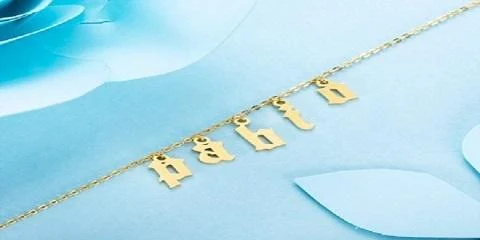Ad Code
Translate
List of 6,000+ Dofollow Commentluv Blogs FREE (Updated 2025)
January 16, 2025
What is Ozempic (semaglutide)? (Updated in 2025)
January 30, 2025
How To Find Suitable Properties In Cyprus? (Updated in 2025)
January 11, 2025
Smart strategies for trading on crypto exchanges
February 18, 2025
June birthstone Moonstone
Khabza Mkhize
June 24, 2019
It consists of two feldspar minerals, feldspar and albite. At first, the two minerals were mixed. Then, as the newly formed mineral cools, the symbiotic feldspar and albite separate into a stacked, alternating layer. When light passes through these flat layers, it refracts in many directions, producing a brilliance. The brilliance is caused by the ray of light scatter on the surface of the diamond. Perhaps the most fascinating aspect of the brilliance is its agile look. As the angle of view changes, the faint light seems to flow across the surface of the necklace name. https://www.getnamenecklace.com/ Other feldspar minerals can also show brilliance. One is calcium sodium plagioclase in Labrador, Canada. This feldspar was also found in Madagascar. Its body color is pale and it will show multi-color brilliance. The industry calls it Rainbow Moonstone, although it is actually calcium-sodium plagioclase, not feldspar. One of the calcium-sodium plagioclase is also known as rainbow moonstone. The feldspar is another feldspar mineral, and the moonlight, which is green and white, is also included. This mineral called moonstone exudes a beautiful color of blue and white light. By contrast, its true identity is less important.

The mysterious, turbulent and halo of the moonstone has been fascinating for centuries. In Indian mythology, moonstone is formed by solidified moonlight, which is said to bring good luck. Many other cultures have also linked this jewel to the moonlight, and it is obvious why people associate the two. Due to its internal structure, the illuminating light scatters, causing a phenomenon called brilliance. It looks like the full moon shines on the thin, high clouds, revealing a faint moonlight. People have always linked moonstones to the moon. Legend shows that moonstone can bring good luck. According to legend, at the full moon, a moonstone in the mouth can foresee the future.
The white and green moonstone was once known as the "ice feldspar", a name derived from a mountain in Switzerland. Adualr (now Gotthard) is one of the premier sources of quality moonstone. The great designers of the romantic Art Nouveau period, René Lalique and Louis Comfort Tiffany, custom-made jewellery often uses light-colored moonstone. In the second half of the 19th century, moonstone was loved by artisans during the art and craft movements, often used in handmade silverware. Wearing the moonstone during the "flower child" movement of the 1960s gave a feeling of elegance. In the 1990s, the designers of the New Age movement once again turned their attention to the natural beauty of jewelry and women. Getnamenecklace the top quality moonstone is embellished with this exquisite platinum and diamond pendant. For centuries, moonstone has fascinated designers and gem connoisseurs.
When buyers choose moonstone, they look at three key factors: body color (background color), color, and halo direction. Moonstone's appearance is translucent to opaque, colorless to white, with a blue, silver, or white brilliance effect. Moonstones are available in a wide range of colors, from green to yellow to brown or gray to near black. Some moonstones have both brilliance and cat's eye, also known as the cat's eye effect. Some will show four-star starlight, called the starlight effect. Among the long history of color, the most popular moonstone should have the following characteristics: colorless, translucent to nearly transparent appearance, no visible inclusions, bright blue and white brilliance, known as Blu-ray in the industry . The top moonstone has the purity of glass with a vibrant blue flash. Under the multi-directional reflection of the lights in the showcase, these rounded moonstones have a beautiful blue luster. The subject color should be nearly colorless, without any yellow, brown or unattractive green tones. Ideally, the brilliance should be blue. The brilliance should be concentrated on the top of the convex circle, which is clear from all angles of view. If the brilliance of the moonstone is only visible in a certain range, its value will drop significantly. Moonstone has a variety of body colors.
In 1997, miners in southern India discovered a new species of moonstone, which has a bright green body color and is described in the industry as “budgerigar green”. The iconic blue and white brilliance of Moonstone floats in this green sea. Gemstones also exhibit a pale yellow pleochroism, that is, different crystal directions display different colors. Today's popular moonstones are diverse in color, with orange to yellow moonstones called peaches. Moonlight with good clarity is almost transparent, and the less the inclusion, the better the quality. The inclusions will affect the brilliance of the white. Faceted moonstone has become more and more common. Cut the union to enhance the brilliance of the grandma jewelry charms and cover up the possible inclusions. This chic moonstone kit features a rose cut, a cut style commonly used in antique diamond jewelry. Moonstone is often used as a decorative jewellery element and is popular. The “Moon Mid-Autumn” effect of the portrait relief is widely sought after, and its name is also worthy of play. The rugged engraved surface, together with the vivid white brilliance, gives birth to a lively beauty, and the gemstone color is unpredictable. Large and high-quality moonstones are rare and therefore relatively valuable.
Featured Post
12 Prominent new technologies and trends emerging in 2025
Khabza Mkhize-
April 02, 2025
Soapie Teasers
Sister Sites
Most Popular
List of 6,000+ Dofollow Commentluv Blogs FREE (Updated 2025)
January 16, 2025
Smart strategies for trading on crypto exchanges
February 18, 2025
Popular posts
List of 6,000+ Dofollow Commentluv Blogs FREE (Updated 2025)
January 16, 2025
Smart strategies for trading on crypto exchanges
February 18, 2025
Footer Menu Widget
Created By Blogspot Theme | Distributed By Gooyaabi Templates


0 Comments